Study with cherub head
Oil on canvas, cm 45,5 x 41
With frame cm 54,5 x 49,5
This is a preparatory study or sketch by virtue of the structural and figural layout; due to formal and substantive evidence it can be traced back to the mature manner of Neoveneto, that at the beginning of the eighteenth century had begun to produce figurations of extreme pathetism typological and formal expressionism. The contemporary Tiepolo pictorial experience dominated the Venetian art scene, once it was time to learn from Pier Francesco Mola (1612-1666).
The delicate putto head offered here, in which a cherub is recognizable by the happy iconographic solution of the wings placed under the face of the angel, is depicted with a vigorous vitalism. A sharp point of view illuminates its face in a shimmering way, scanning its features with strong shadows and with a youthful redness that makes the cheeks orange. The veristic perfection with which the artist arranges his semblance is of wonderful expressiveness. The eyes are swollen with intensity, and they denote together with the general setting of the head a conscious reflection on the physiognomy, peculiar within the emerging context of Venetian painting.
The painting in question is influenced by the wide-ranging productions, both monumental and prospective, then in vogue in the territory of the Serenissima. Conceived by a view from below, the portrait evokes from the Venetian rococo that particular predilection for the open and clear, airy ways, denounced in the first beat by Tiepolo. The conscious detachment from the pure decorativism and the repeated Cortonese paginative solutions then in vogue allow to combine the present with the production of Francesco Fontebasso, who with Gaspare Diziani had initiated a happy renewal of Venetian painting, through a definitive reflection on the ways now established, even genially, by Ricci, Pellegrini and Tiepolo. Fontebasso, born in 1707, died a year after the Canaletto (1769); from the faith continually oscillating between the Ricci, of which he was first pupil, and the Tiepolo, Fontebasso was part of the so-called "travelling artists", which through the continuous wandering between towns and courts of northern Italy and Europe, allowed the widespread spread of Venetian styles, ensuring a refound preminence. While keeping faithful to the master’s lesson, Fontebasso received a vital impulse from the figural elegance promoted by the Academy of San Luca Romano, when he arrived in the capital in 1728; he then went to Bologna, the artist collected the warm classical and sometimes quadrature congerie, Emilian species, and returned to his native Venice. Here he obtained an important commission from Sebastiano Uccelli for the fresco of Ca' Zenobio, near Treviso; then followed the impetuous figures for the Manins in the first chapel of the villa of Passariano (1732) and for the Jesuits of the Church of the Jesuits, with the scenes of Elijah being taken away to heaven and The angels appear to Abraham, of clear tiepolesca memory. In a crescendo of commissions, the artist dedicated himself from 1759, in the city of Trento, to the realization of nineteen canvases related to the Old and New Testament for the Great Hall of the refettorio del Buon Consiglio; the artistic apotheosis reached him later, thanks to the urgent request for his works by major Venetian families: Duodo, Bernardi, Boldù, Barbarigo, Contarini. The artist reached the tsarist Saint Petersburg in 1761, to decorate the ceiling of the church of the Winter Palace.
Consider, in relation to the present cherubino, the splendid physiognomies achieved by Fontebasso in the painting Couple of peasants and a child, kept at the Galleria Fondantico in Bologna, where the boy appears really tiepolesco in setting, and almost equal to the present, in the face; the same faces of a child appear in the paintings Apparizione della Madonna a San Girolamo (private collection) and Europa rises on the back of the bull (private collection florentine); finally in the angels descending from the sky of San Francesco da Paola del Bode Museum (formerly Kaiser Friedrich, Berlin)
The object is in good condition





















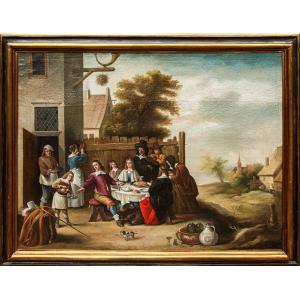

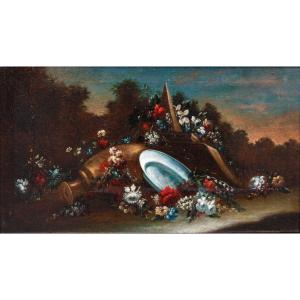

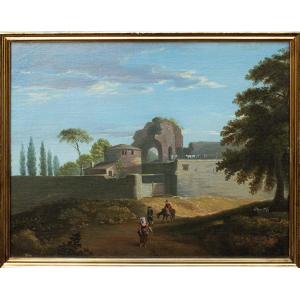
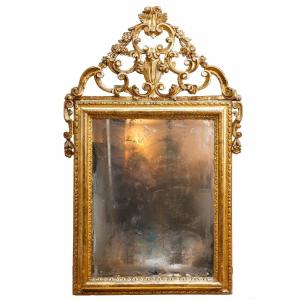
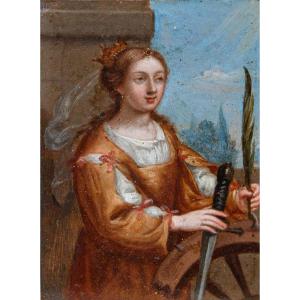



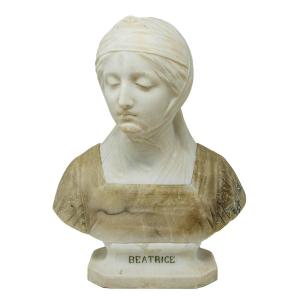



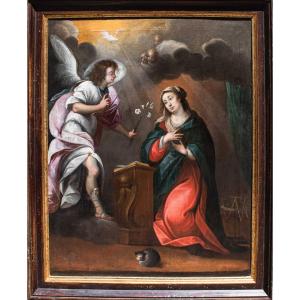



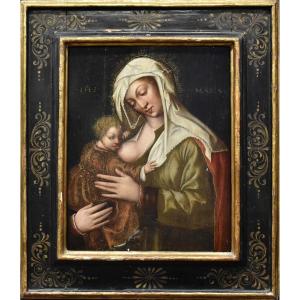




 Le Magazine de PROANTIC
Le Magazine de PROANTIC TRÉSORS Magazine
TRÉSORS Magazine Rivista Artiquariato
Rivista Artiquariato